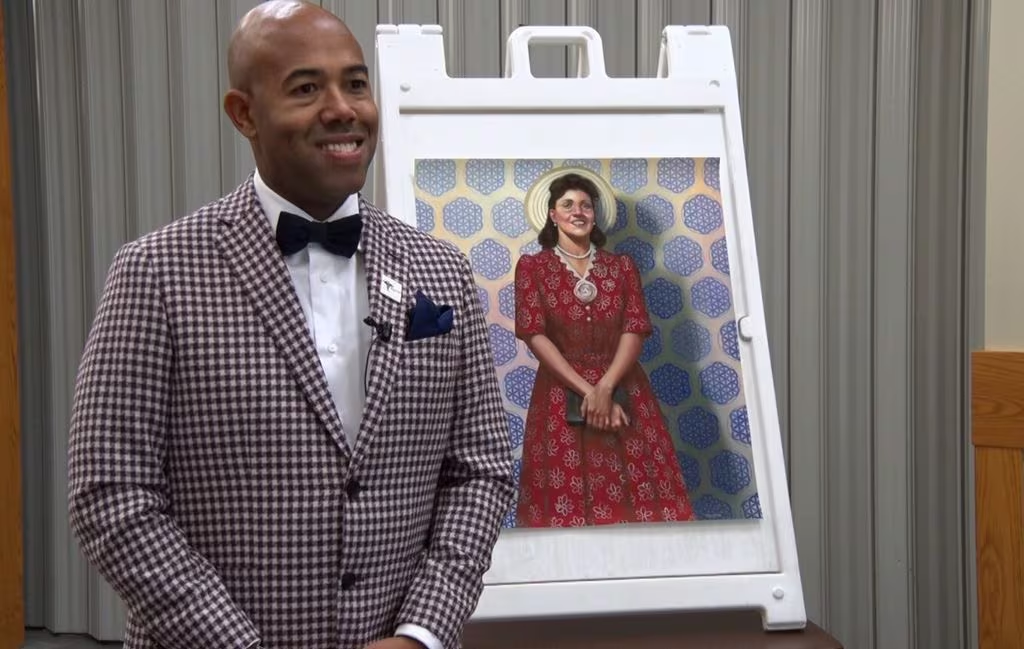As a post-doctorate biochemistry student, Craig Caldwell worked with a line of cells well known within the scientific world, known as HeLa.
“When you are working on your post-doctorate, there isn’t a lot of time for reflection [on] where these cells come from,” said Caldwell, who’s now dean of Salt Lake Community College’s School of Science, Mathematics and Engineering.
Years later, Caldwell said, “I learned that [HeLa] was an acronym for a person’s name. That was Henrietta Lacks.”
Lacks, the African American woman whose cancer cells were the source of the HeLa cell line, was the subject of a daylong event at SLCC’s Taylorsville Redwood campus, called “Someone You Knew: The Story of Henrietta Lacks.”
The story of Lacks, and the HeLa cell line, started in 1951, when Dr. George Otto Gey at Johns Hopkins Hospital in Baltimore treated Lacks for cervical cancer. Lacks died later that year, at age 31, but the cells Gey obtained lived on.
It was a time when HIPAA laws were not yet established, and consent was not considered necessary. Johns Hopkins distributed the HeLa cell line to various research institutions. While John Hopkins did not receive any payment for doing so, they also did not obtain consent from Lacks or her family. The HeLa cell line, considered extraordinary for its ability to multiply extensively, has since been used to research cancer, vaccines and diseases.
“The bioethical dimensions of Henrietta Lacks’ story should prompt us to reflect on the consent, autonomy and responsible use of human tissue,” said Dr. Richard Ferguson, founder of Black Physicians of Utah and chief medical officer at Health Choice Utah.
Ferguson, the keynote speaker at the Dec. 5 event, added that Lacks’ story heightens ethical awareness of America’s medical and scientific research, and of the exploitation of Black people.
“Unfortunately, I’ve seen many parallels [in] Ms. Lacks’ story, highlighting a dark facet of America’s medical and scientific progress … fueled by racism and unethical practices in the past and present that have taken from Black people and given so little in return,” Ferguson said.
The HeLa cells, Ferguson said, allowed for the development of a vaccine for human papillomavirus (HPV), which is linked to cervical cancer — the condition that claimed Lacks’ life. Ferguson also pointed out how HeLa cells perfected the first in vitro egg fertilization in 1981.
“As we marvel at the scientific advancements facilitated by HeLa cells,” Ferguson said, “we must also acknowledge the ethical complexities that [accompany] the progress.”
Susan Sample, a writer at Huntsman Cancer Institute, spoke about the importance of documenting one’s stories.
“Keep recording your memories and sharing them,” Sample said. “I do believe with all my heart that writing and telling your stories can be healing.”
Allyson Mower, scholarly communication and copyright librarian at the University of Utah Marriott Library, took time to mention the recently formed France Davis Utah Black Archive, which houses historical photographs, records and documents from Utah’s Black community.
David Sanders, a film major who hosted the event, said he wanted attendees to walk away with an understanding of Lacks’ story and the tools to overcome cancer.
“Henrietta Lacks’ contribution was important across the board,” Sanders said. “[Lacks] saw cancer as something she had to surrender to, because she didn’t have the tools we have.”
Sanders added, “Everybody has a story, and Henrietta Lacks is a great intersection. We plan to continue to [tell] her story, and people will draw strength from it.”
Teresa Chaikowsky wrote this story as a journalism student at Salt Lake Community College. It is published as part of a new collaborative including nonprofits Amplify Utah and The Salt Lake Tribune.
###
NOTE TO MEDIA PARTNERS PUBLISHING WORK
We also request organizations include the following text either at the beginning or end of the story text :This story is jointly published by nonprofits Amplify Utah and [Your Media Organization's Name] to elevate diverse perspectives in local media through emerging journalism. Teresa Chaikowsky wrote this story as a journalism student at Salt Lake Community College. For more stories from Amplify Utah, visit amplifyutah.org/use-our-work.



